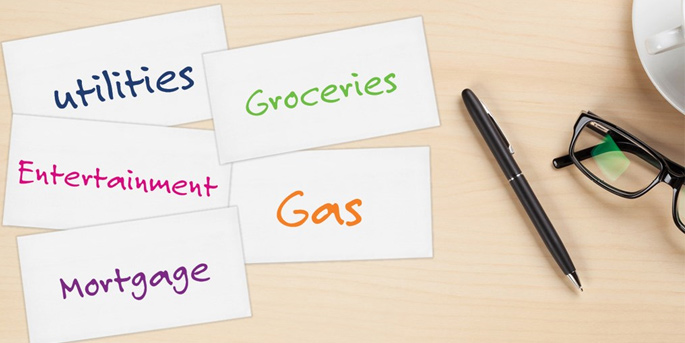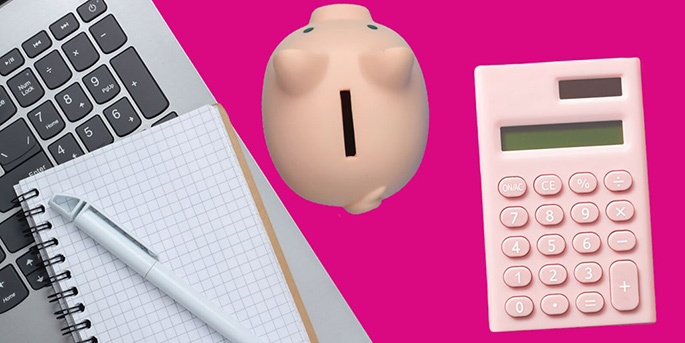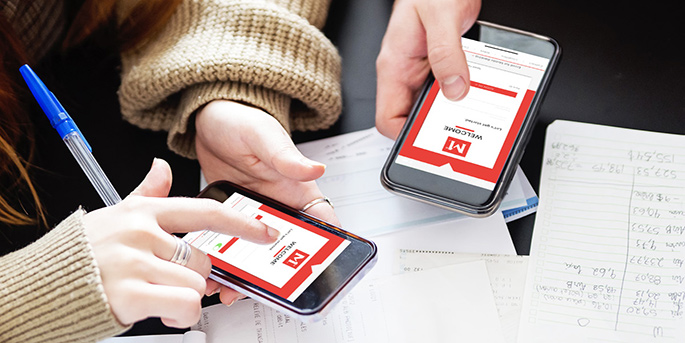How to Choose the Right Budgeting Method
Minute Read

Committing to a budget is easier when you have a system to guide you through saving, spending and sometimes splurging. But with so many budgeting techniques, what system would work best for you?
Some of the most popular types of budgets include the 50-30-20 Rule, envelope system, zero-based budgeting and pay-yourself-first budgeting. We've created a guide on each of the budgeting methods, including their benefits and who they work best for, to help you find the right fit.
Method #1: 50-30-20 Rule
How it works: The 50-30-20 Rule breaks your monthly budget into three groups. Half of your after-tax income goes to “needs” or things you can't live without, such as your rent or mortgage, minimum credit card payments, groceries and utility bills. Another 30% of your income goes to “wants,” like vacations or new clothes. And 20% goes to savings, such as an emergency or college fund.
For example, say your monthly take-home pay is $2,000. Here's how it would break down:
- 50% to needs: $1,000
- 30% to wants: $600
- 20% to savings: $400
Benefits: The plan offers flexibility. If you can cover your “needs” with less than half of your income, you can divide the rest between “wants” and “needs.” You can also earmark more from your “needs” to pay off credit card or other debt.
Who it works best for: People who want to prioritize savings and those new to budgeting.
Method #2: Envelope System
How it works: Get all your after-tax money in cash and put it in envelopes labeled with the categories you want to spend on based on the monthly budget you devise. You cannot move money from one envelope to another during the month. Once you use up all your cash, you cannot put in any more until the next paycheck.
For example, your envelope categories could include the following:
- Rent or mortgage
- Utilities
- Entertainment
- Groceries
- Car payment
- Student loan payment
- Eating out
You can adjust your monthly spending based on the previous month's results. Say you budgeted $60 for eating out but only used $20. The following month, you might give $40 more for groceries instead.
Benefits: You see where all your money goes, and you stick with your spending limits to reach your financial goals.
Who it works best for: People who want to curb shopping habits or limit impulse buys.
Method #3: Zero-Based Budgeting
How it works: The aim is to reach a balance of $0 in your checking account by month's end. You designate every dollar to pay for necessities like rent and electricity or extras like takeout coffee. You can also prioritize short- and long-term savings, such as going on vacation or doing a home renovation project.
For example, if you have nine categories in your monthly budget, then the total you spend on them should equal your monthly post-taxes income, with no money left over. Say that number is $3,000. Your budget might look like this:
- Rent or mortgage: $1,100
- Car payment and gas: $300
- Medical or dental services: $50
- Groceries: $500
- Utilities: $250
- Cellphone service: $130
- Entertainment and dining out: $150
- Child's college fund: $60
- Emergency fund: $60
- Child support: $300
- Credit card payment: $100
Benefits: You can adjust the monthly budget based on upcoming events, such as an anniversary dinner or medical procedure. You can also raise your debt payments when you have leftover money.
Who it works best for: People who stay on top of their finances and are comfortable using digital banking tools to ensure they remain within zero balance.
Method #4: Pay-Yourself-First Budgeting
How it works: The pay-yourself-first system prioritizes savings. You first decide how much of your monthly after-tax income you want to put toward savings. Then you spend the rest on your necessities.
For example, if you make $3,000 per month after taxes, your savings may look like this:
- 401(k): $100
- Health savings account: $50
- Child's college fund: $100
- Emergency fund: $50
- Vacation fund: $100
That totals $400 for savings. You then have $2,600 left to pay for everything else, such as housing, transportation, groceries, car insurance, etc.
Benefits: Savings accounts multiply when you focus on them. You also learn to cut back on impulse purchases, so you can still cover your bills with the money left after savings.
Who it works best for: People who want to save more money.
Whatever method you choose, you can use our digital banking tools to keep your budgeting on track and check your account balance regularly.



